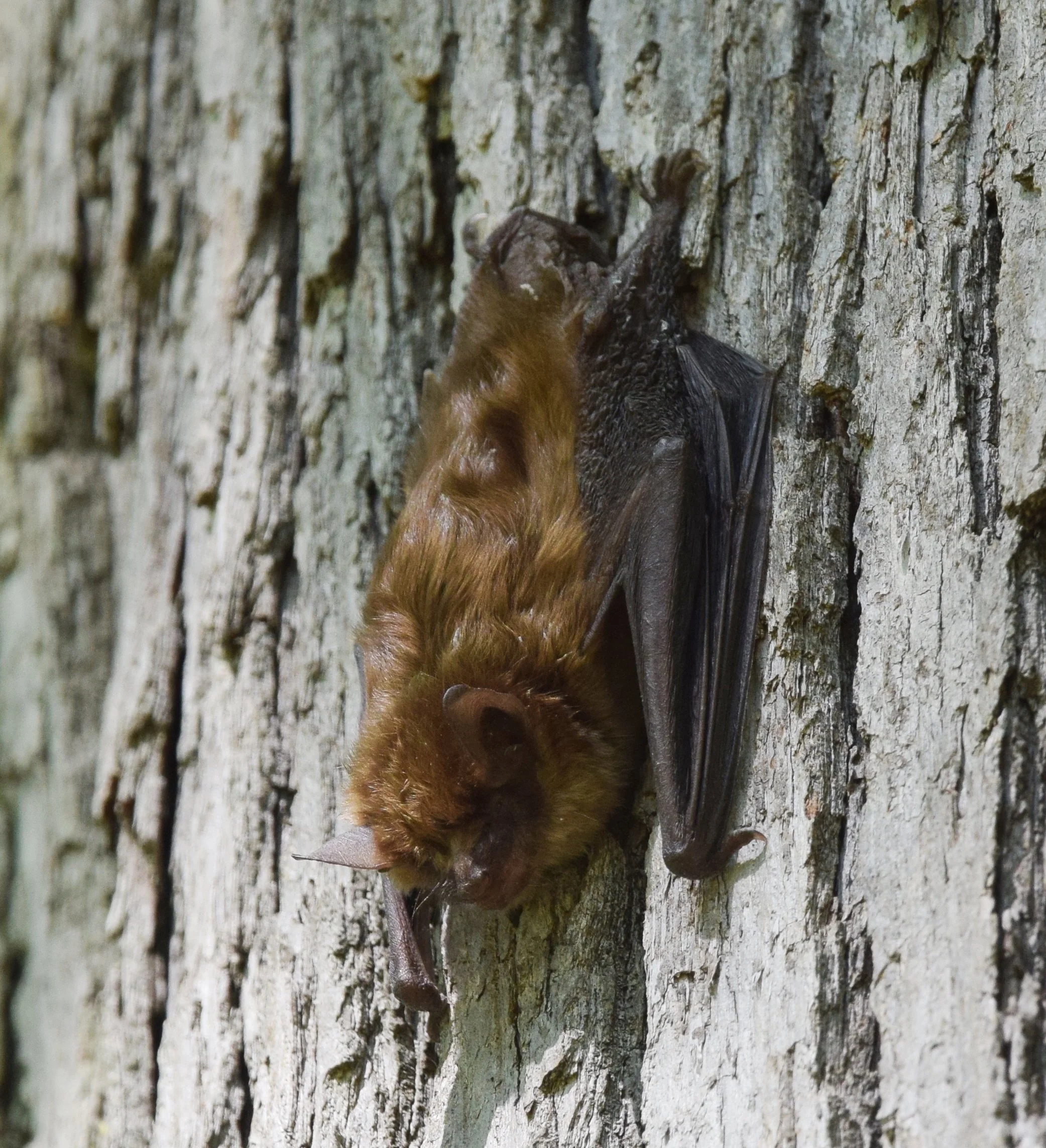When I got to see bats up close for the first time at Fair Meadows Sanctuary this past July, I was blown away by their beautiful strangeness. Flying overhead at dusk, you can just make out their noses and ears. Their large membranous wings end in mammalian fingers that make them uncanny. In the dark, they move through the world with echolocation at frequencies humans can’t hear. Bats are somewhat unknowable to us, even bat specialists emphasize how little we know about them.
Small cluster of little brown bats (photo by Keith Shannon/USFWS).
However, there are two species in Wisconsin that roost near human dwellings and are easily observable over the summer—the little brown bat and the big brown bat. Reproducing females may form maternity colonies of hundreds or even thousands, usually in caves or man-made buildings like barns, attics, or bat houses. The same bats return to these roost sites every summer, making it possible to monitor them year after year.
The Wisconsin Bat Program (coordinated by the Wisconsin DNR) collects data from volunteers who have bat roost sites on their properties. Participants are asked to count individual bats as they leave their roost for night feeding at least twice during the summer: once in early June and once in late July. By this time, bat pups that were born earlier in the season are flying independently. The two data points allow DNR scientists to analyze how bat populations are changing over time and understand what conditions make a good roost site, allowing for better habitat management and protection.
Little brown bat with white-nose syndrome (USFWS photo).
Local bat populations have been through the gauntlet this century. White-nose syndrome (WNS), a fungal disease targeting hibernating bat species, has killed millions of bats throughout North America. This disease causes them to leave their winter hibernacula, often resulting in their starvation and death. In Wisconsin, WNS arrived in 2014, and by 2017, little brown bat populations were averaging 20% of their pre-WNS numbers.
Since the onset of WNS, the Wisconsin Bat Program has used the data collected by volunteers to understand changes in bat population health at roost sites. Bat monitoring data has also helped with targeting WNS vaccine development and distribution. This work has led to bat populations all over the state making meaningful recoveries! Recent monitoring data shows that at some roost sites, little brown bat numbers have steadily increased from 2017 and are now reaching just over 50% of what they were before WNS—still low, but much improved.
Big brown bat on the side of a tree (photo by Andy Reago & Chrissy McClarren).
Bats are an important part of Wisconsin’s natural landscape. Citizen science programs like the roost monitoring program help scientists and conservationists support bat populations everywhere. By participating in these counts, volunteers get to see and participate in their recovery firsthand. No matter who you are, there’s always something you can do to support wildlife conservation!
To learn more about the Wisconsin Bat Program, visit wiatri.net/inventory/bats.
Written by Juanita Duarte, Southern Wisconsin Bird Alliance Diversity in Conservation Intern
Cover image by Andy Reago & Chrissy McClarren. A big brown bat flies through a dusky sky.







